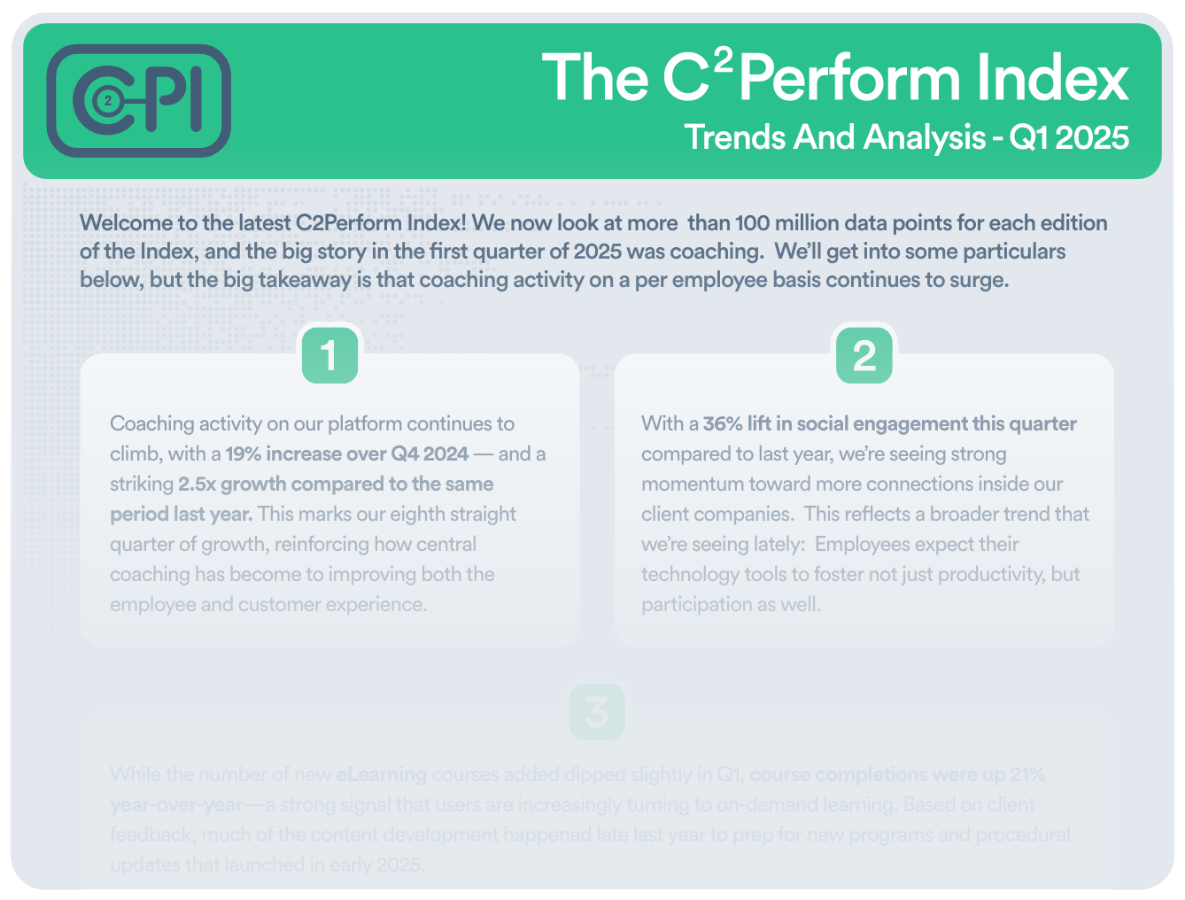Employee coaching is crucial to maintaining a productive workforce but often falls to the wayside when day-to-day tasks get in the way. When coaching your employees, it’s important to create a feedback loop that helps employees continuously grow and improve.
However, only 26% of employees feel like they receive feedback that helps them perform better at work. Focusing on your employee coaching sessions can help improve employee performance by creating a more engaged workforce.
How Effective Are Employee Coaching Sessions?
Employee coaching directly affects how engaged your employees feel, which in turn affects retention and performance management. Employee engagement can improve employee retention and increase productivity, so investing in your coaching is in your organization’s best interest.
According to Gallup, teams that are highly engaged outperform those that are not in 11 different business outcomes. So by focusing on employee coaching, you can drive their performance and create a strong, positive work culture.
6 Tips for Improving Employee Coaching
When it comes to employee coaching, there are benefits for everyone involved. Employees feel as if the company is investing in their careers and are given an opportunity to feel heard. Additionally, with dynamic coaching, mentors can tailor employee coaching programs to meet business needs as well.
Try these tips to improve your employee coaching skills.
Have a Goal in Mind
When entering a coaching session with an employee, have a goal in mind. For example, do you want to help the employee increase sales/successful call resolutions or some other performance metric? Do you want to prepare the employee for a promotion or new job responsibilities? Have a goal in mind for the meeting so that you can consistently guide the coaching session towards that desired outcome.
This can help employees have a clear direction and understanding of what they need to work on, how to improve, and/or some key performance indicators (KPIs) that they can measure to know they’re on the right track. It also gives the manager or mentors the opportunity to gauge how an employee is performing on specific tasks and metrics by collecting feedback during the coaching session.
Provide Clear Strategies for Improving Performance
If the goal of the meeting is to improve an employee’s performance, it’s important to give the employee specific feedback and strategies to help them actually improve. It isn’t enough to simply say “do better on ‘X’ goal.” It’s necessary to walk them through what they can do to improve.
For example, if the metric you need the employee to improve is sales, you could share advice and strategies from your top-performing sales reps. If the employee is struggling with a particular process, then you could walk them through how it’s done and/or role play going through that process.
Start with a Positive
Let your employees know what you think they’re doing well on. Start and finish each coaching session with some positive feedback. If you only go into it with what the employee needs to work on, they may feel demoralized, so make sure you acknowledge any good work they’ve been doing.
By starting and finishing on a positive note, you can help preserve the employee’s engagement and help them build confidence in their particular area of expertise.
Adjust Coaching Sessions Based on Employee Needs
Each employee is going to have different needs. Some may excel in specific areas that others need help with. Use your first few coaching sessions to gauge where employees are struggling and ask them if there is anything specific they want to work on.
This way, you can tailor each employee’s coaching sessions accordingly so they feel like they are getting valuable feedback, not cookie-cutter training. Adjusting to their needs will make employees feel heard and improve their performance, too, ultimately benefitting the business’s bottom line.
Two things that can help you customize your one-on-one coaching sessions with employees are using active listening and trying to identify the underlying causes of performance issues.
Use Active Listening
Are you coaching your employees or are you telling them what to do? Active listening helps you gather feedback from your employees and truly hear them so you can best help them.
When listening, make sure you are paying attention to what your employees are saying—including both their specific points and any broader messaging. Show that you’re listening and offer feedback without interrupting.
Active listening can help your employees feel heard and, as a result, boost their engagement. This can also help you understand any issues that could be impacting employee performance.
Identify Underlying Causes for Performance Issues
If you can identify underlying causes for performance issues, you can help coach your team accordingly and get them back on the right track. You can identify some of these issues when meeting with employees and receiving feedback from them.
Another way you can do this is by checking service tickets and call recordings. Use these to see if there are any knowledge gaps and check for frequently asked questions from customers that employees have a harder time answering.
Get Help Improving Employee Coaching Sessions
Coaching your employees has never been easier. At C2Perform, we offer a dynamic coaching platform that allows you to easily connect with your team and keep all of your performance management information under one roof.
With our Coaching Platform, you can recognize milestones, reward achievements, create contests, measure team insights, and more to boost employee engagement and improve your coaching. Schedule a demo today to see how C2Perform can help your team.
 English
English Español
Español









